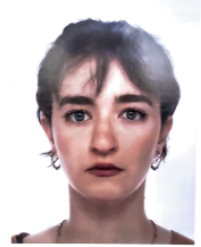Vous êtes ici :
- Unité de recherche
- CY Héritages
- Accueil
- L'UMR
- Équipe
- Doctorant.es
Sarah Bounoua

Date d'inscription
Septembre 2023
Directrice de recherche
Anne Lehoërff
Co-encadrant
Benoît Mille (ministère de la Culture)
Intitulé de la thèse
Mobilité(s) en Méditerranée : l’artisanat des métaux en Corse et dans le monde tyrrhénien entre le IIIe et le Ier millénaire avant notre ère. Réceptions et circulations de modèlesMediterranean Mobility(ies) : Metal Craftsmanship in Corsica and in the Tyrrhenian world between the 3rd and 1st millennia BC. Models’ Receptions and Circulations
Résumé de la thèse
Entre le IIIe et le Ier millénaire avant notre ère, des haches, des épées, des poignards et des parures sont conçus, fabriqués, abandonnés ou enterrés dans des lieux stratégiques de Corse. Faits de cuivre, d’or ou d’argent, ils portent la marque de celles et ceux qui les ont façonnés, portés ou utilisés. Leur histoire implique des rencontres. Par leur étude, il est possible de caractériser la circulation de ces métaux - que ceux-ci soient sous forme de minerais, de lingots, de semi-produits, d’objets finis ou de fragments d’objets - et, par cette voie, approcher sous un angle économique, mais aussi culturel, ces sociétés du passé.Espace d’intense circulation de personnes et de marchandises, la Méditerranée est au centre de nos questionnements. En choisissant la Corse comme point de départ, ce sont les mobilités au sein de la mer Tyrrhénienne et de la Méditerranée occidentale qui sont questionnées. L’objectif de cette thèse est de mettre en récit un corpus d’objets métalliques insulaires au sein d’un vaste réseau, dans une période chronologique large, qui propose une étude sur la longue durée. Elle permettra de mettre en évidence des échanges et des interactions pour saisir l’évolution des pratiques et leurs réalités au sein de cultures archéologiques.
Combinant sciences humaines et sciences des matériaux, l’analyse des objets restituera leur chaîne opératoire. Pour cela, l’intégration de l’imagerie scientifique sera l’une des clés majeures d’obtention d’informations invisibles à l’œil nu. Grâce à l’usage de nouvelles technologies appliquées à l’objet archéologique, nous répondrons aux questions de transferts techniques dans le monde méditerranéen. Les résultats obtenus favoriseront une connaissance plus fine de ce patrimoine matériel. Prônant l’interdisciplinarité, ce travail s’attachera à produire une synthèse, jusque-là inexistante, des premières métallurgies en Corse, tout en rattachant cette donnée à l’histoire de l’homme et du milieu maritime.
Résumé de la thèse en anglais
Between the 3rd and 1st millennium BC, axes, swords, daggers and adornments were designed, manufactured, abandoned or buried in strategic places in Corsica. Made of copper, gold or silver, they bear the mark of those who fashioned, wore or used them. Their story involves encounters. By studying them, it is possible to characterize the circulation of these metals, whether in the form of ores, ingots, semi-finished products, finished objects or fragments of objects, and, by this way, to approach from an economic, but also cultural angle, these societies of the past.An area of intense movement of people and goods, the Mediterranean is at the center of our questions. By choosing Corsica as a starting point, mobility within the Tyrrhenian Sea and the western Mediterranean Sea is questioned. The objective of this research is to put into words the story of these metal objects within a vast network, in a broad chronological period, which offers a long-term study. It will make it possible to highlight exchanges and interactions to grasp the evolution of practices and their realities within archaeological cultures.
Combining human sciences and materials sciences, their analysis will restore their operating chain. The integration of scientific imagery will be one of the major keys to obtain information invisible to the naked eye. Thanks to the use of new technologies applied to archaeological objects, we will answer the questions of technical transfers in the Mediterranean world. The results obtained will promote a more detailed knowledge of this material heritage. Advocating interdisciplinarity, this work will endeavor to produce a synthesis, hitherto non-existent, of the first metallurgies in Corsica, while linking this data to the history of man and the maritime environment.


